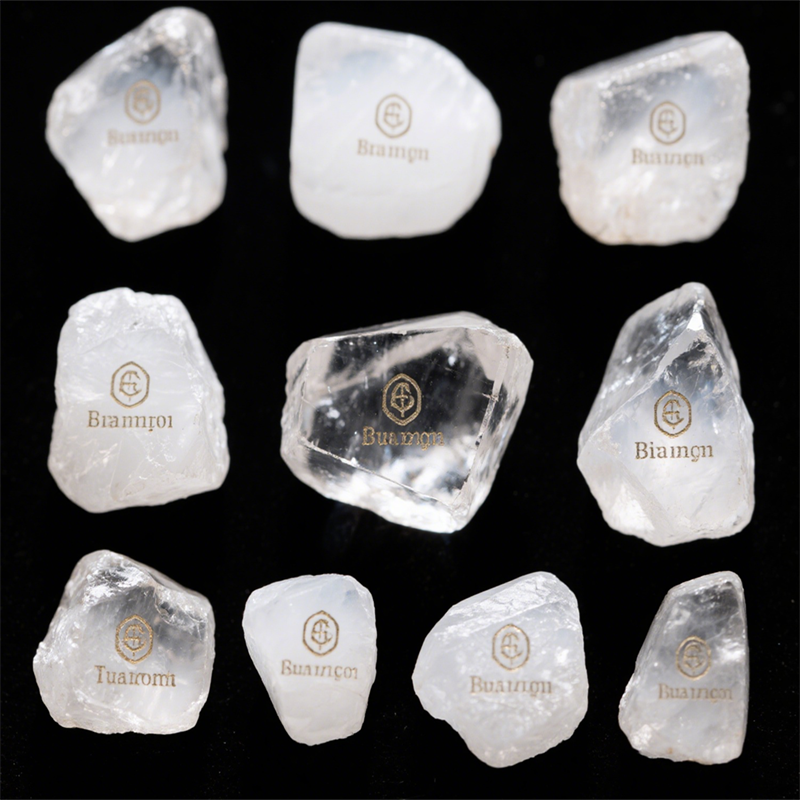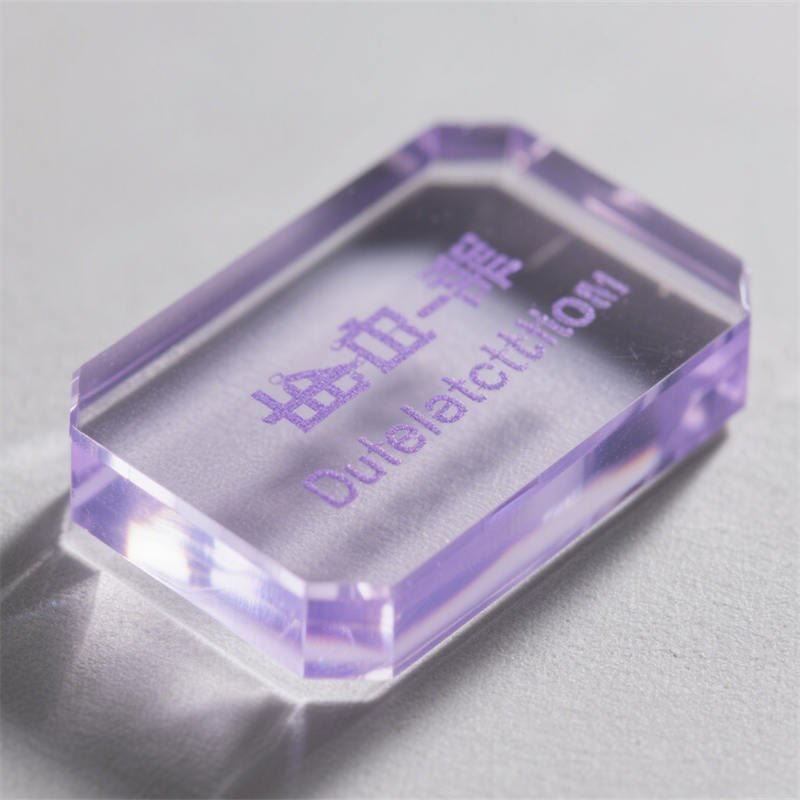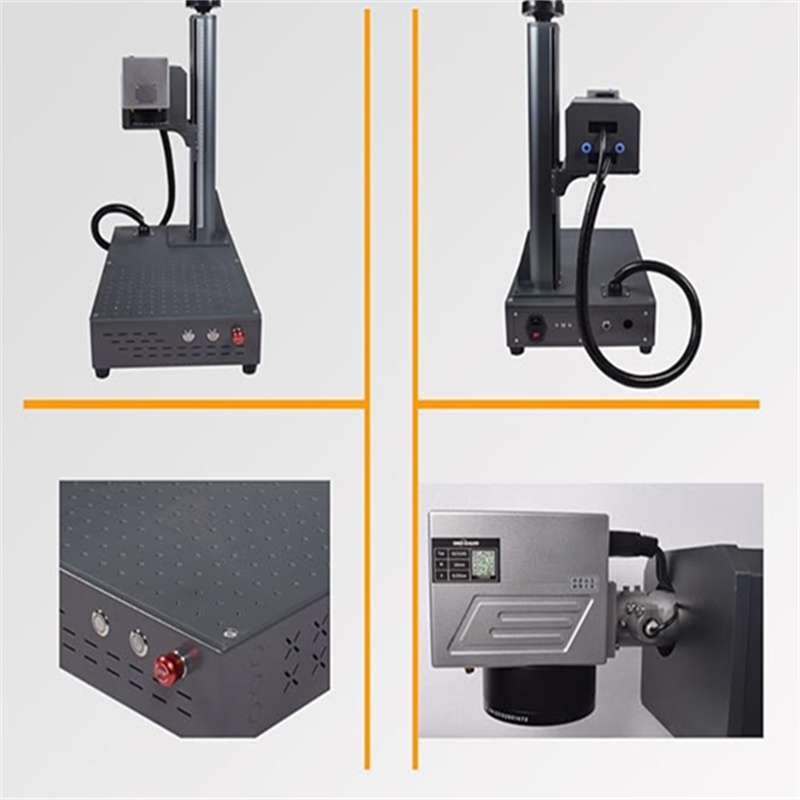In modern manufacturing, marking technology serves as a crucial means for product identification, traceability, and brand promotion. With the rapid development of science and technology, UV laser marking machines have gradually emerged as a prominent choice among various marking devices, finding extensive applications across numerous industries. Today, let’s delve into a detailed understanding of UV laser marking machines.
I. The Principle of UV Laser Marking Machines
UV laser marking machines belong to the series of laser marking machines. They utilize 355 nm UV lasers, developed through a three – stage intracavity frequency doubling technology. Their marking principle shares similarities with traditional laser marking machines, both of which use laser beams to create permanent marks on the surfaces of various materials. However, the key difference lies in that UV laser marking machines directly break the molecular chains of materials with short – wavelength UV lasers, instead of exposing the underlying materials by evaporating the surface layer, as long – wavelength lasers do, to display the desired etched patterns and text.
This “cold processing” method of photochemical ablation, with highly energetic (ultraviolet) photons, can break the chemical bonds within the material or the surrounding medium, causing non – thermal destruction of the material. This ensures that the inner layers and adjacent areas do not experience heating or thermal deformation. The final processed materials feature smooth edges and minimal carbonization, minimizing both the fineness and thermal impact.

II. The Remarkable Advantages of UV Laser Marking Machines
- High Precision: UV lasers have a relatively short wavelength (usually 355nm), resulting in an extremely small spot size that can achieve micron – level precision. This makes them particularly suitable for fine marking and the engraving of complex patterns, excelling in fields with extremely high precision requirements, such as microelectronics and precision devices. For example, during the marking of chips and integrated circuits, it can ensure that the material surface remains undamaged, avoiding the impact of thermal effects on the functionality of electronic components.
- Low Thermal Impact: UV lasers are classified as “cold light” processing. Due to the concentration of energy in the ultraviolet region, they have high photon energy but minimal heat diffusion. Compared with other types of laser marking machines, the heat – affected zone (HAZ) on the material surface is much smaller, reducing the likelihood of thermal deformation or burning. Therefore, they are especially suitable for processing heat – sensitive materials like plastics and glass. When marking on glass surfaces, such as the logos or serial numbers on optical glass and touchscreens, the low thermal impact of UV lasers prevents the occurrence of cracks.
- Broad Material Adaptability: UV laser marking machines can process a wide range of materials, including glass, ceramics, metals, plastics, and composite materials. In particular, they can easily handle materials that are difficult to process with traditional lasers, and they are especially proficient in dealing with transparent or semi – transparent materials, such as glass and crystals. On ceramic surfaces, they can create precise patterns and text markings; on plastic materials like PVC and ABS, they can produce high – contrast markings, which are widely used in consumer electronics products, automotive parts, etc.
- Environmentally Friendly: The UV marking process does not require chemical agents and does not generate harmful gases, making it a green and environmentally friendly processing method that meets the current requirements for environmentally friendly production.
- Exquisite Marking Effect: The marked patterns and text are fine, clear, and have smooth edges, eliminating the need for subsequent processing. In fields such as plastics and electronics, it can achieve exquisite non – contact marking, enhancing the product’s appearance quality and brand image.
- Fast Marking Speed and High Efficiency: Using high – energy laser beams, compared with traditional marking methods such as mechanical tools or inkjet printing, the marking speed of UV laser marking machines has been significantly improved. For enterprises with a large number of products to be marked, UV laser marking machines can significantly increase production efficiency and reduce time costs.
- Stable Overall Performance, Compact Size, and Low Power Consumption: Thanks to advanced optical technologies, UV laser marking machines exhibit high durability and stability. Additionally, their relatively compact size takes up less space, and their low power consumption helps enterprises save certain operating costs.

III. Diverse Application Fields of UV Laser Marking Machines
- Electronics and Semiconductor Industry: Perform high – precision marking on chips and integrated circuits to ensure product traceability and quality control; on printed circuit boards (PCBs), they can mark text, barcodes, or QR codes, suitable for small and complex patterns, meeting the precision marking requirements of the electronics industry.
- Medical Device Industry: Capable of creating permanent marks on surgical tools, medical packaging, etc., not only accurately indicating product information but also preventing contamination, ensuring the safety and hygiene of medical devices.
- Food and Pharmaceutical Packaging Industry: Conduct non – contact marking on medicine bottles, tablet packaging, and food packaging to ensure clear, long – lasting, and non – erasable information. The feature of being pollution – free and free from harmful substance residues makes it ideal for marking important information such as production dates and batch numbers, safeguarding consumer rights and product quality and safety.
- Glass and Ceramic Product Industry: Mark on glass surfaces, such as optical glass and touchscreens, without causing cracks due to thermal effects; on ceramic surfaces, they can achieve precise pattern and text marking, enhancing the added value of products.
- Polymer Material Industry: Capable of creating high – contrast markings on various plastic materials, widely used in the plastic casings of consumer electronics products, plastic components of automotive parts, etc., meeting the marking requirements of different industries for plastic materials.
- Precision Instrument and Watch Industry: Suitable for marking products with extremely high precision and detail requirements, ensuring the accuracy and aesthetic appeal of the marks, which aligns with the high – quality positioning of the products.
- Optical Component Industry: When marking lenses and optical components, it can ensure that the precision of the components remains intact and maintain the performance of the optical components.
- Cosmetic Packaging Industry: Create clear product information markings on plastic and paper packaging materials, enhancing the brand image of products and attracting consumer attention.
- Other Fields: In the coding and marking of aerospace and automotive parts, it ensures the durability and precision of the marks without affecting the material structure; it also has extensive applications in many other areas, such as flexible PCBs, LCD liquid crystal glass, metal surface coatings, plastic buttons, electronic components, gifts, communication equipment, building materials, etc.

With their unique principles, numerous advantages, and extensive application fields, UV laser marking machines are gradually becoming an indispensable marking device in modern manufacturing. As technology continues to advance, it is believed that UV laser marking machines will play an even more important role in more fields, bringing new opportunities and transformations to the development of various industries. If you are interested in the application cases of UV laser marking machines in specific industries or want to learn more about their technical details, feel free to leave a comment, and let’s discuss together.



